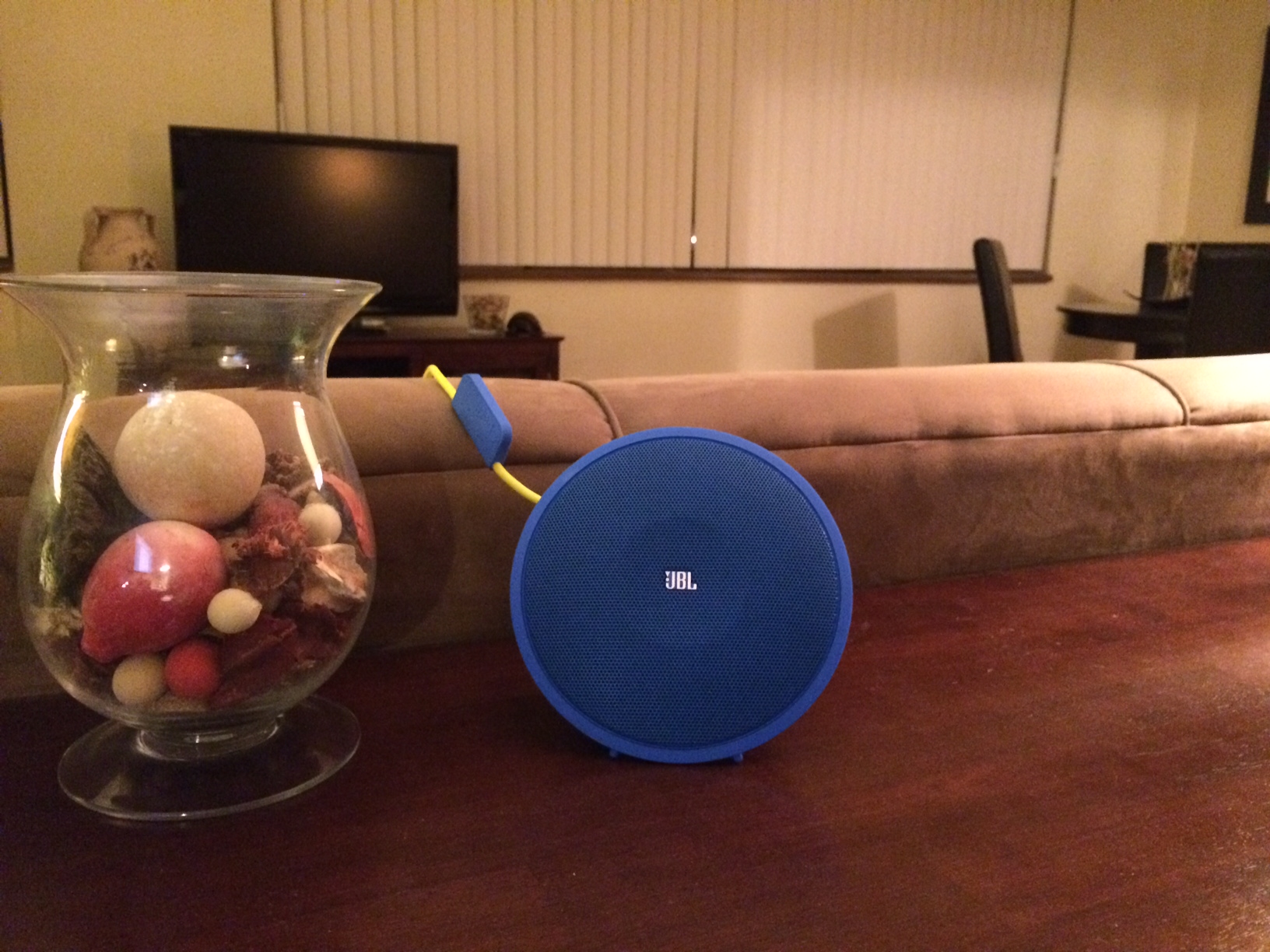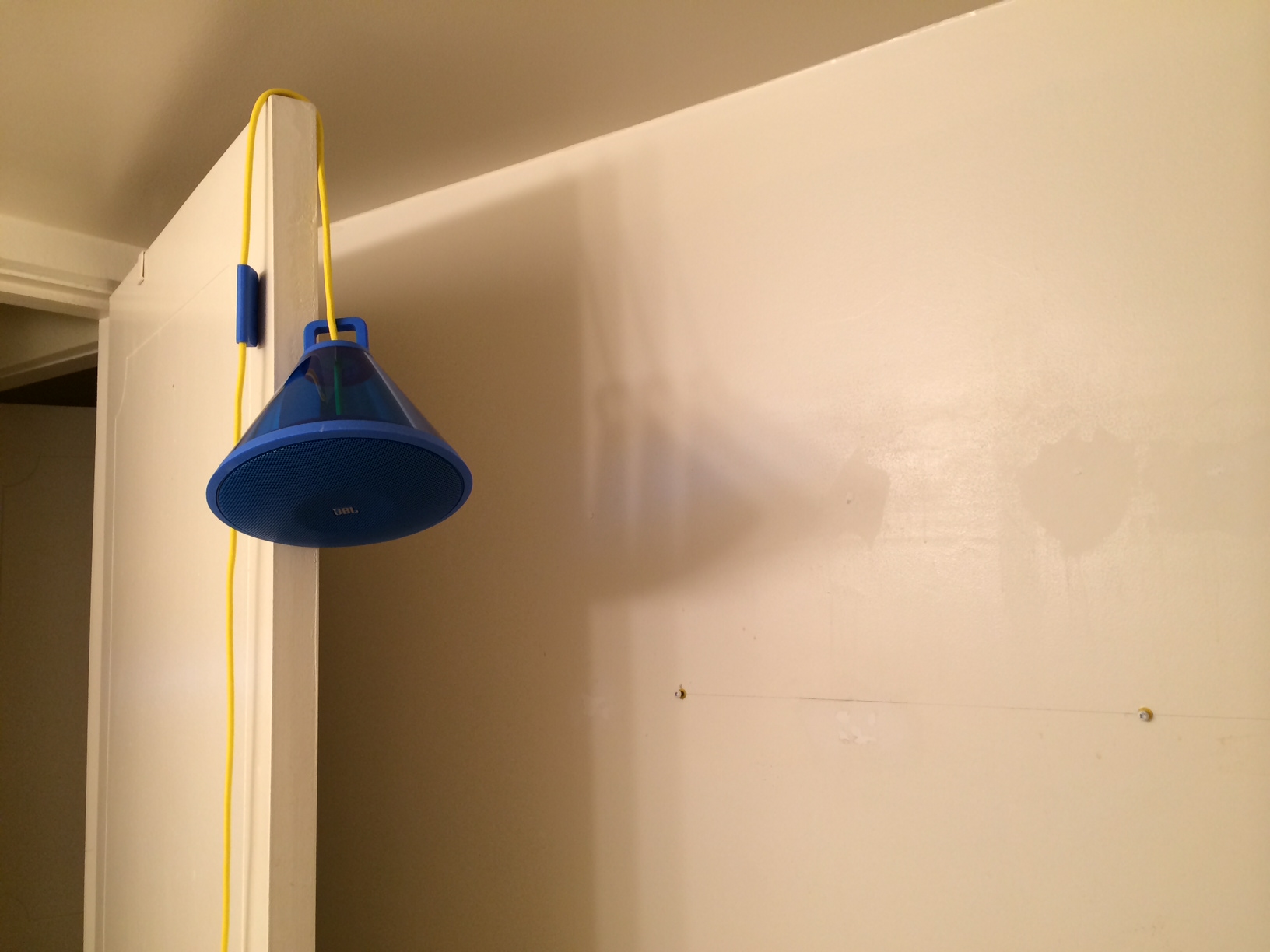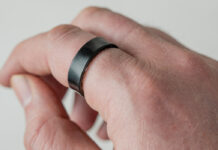 Is it a megaphone? A new age showerhead? An updated version of the popular 1990’s toy Skip-It? Nope, the JBL Spark is an exceptionally unique wireless speaker designed to be mounted like a hanging lamp – and I recently had the opportunity to take one for a test drive.
Is it a megaphone? A new age showerhead? An updated version of the popular 1990’s toy Skip-It? Nope, the JBL Spark is an exceptionally unique wireless speaker designed to be mounted like a hanging lamp – and I recently had the opportunity to take one for a test drive.
DESIGN
The appeal of the JBL Spark is clearly its funky and playful design, which is like nothing I’ve seen before on the market. Available in red, blue, and yellow, I can’t help but assume that the Spark is targeted towards a very young demographic. Shaped like a funnel, the back – or “cone” – of the speaker is transparent plastic. An interesting design feature sure, but the nerd in me was really hoping that through this transparent plastic I’d be privy to the inner workings of the speaker, but sadly, I only saw the power cable run through the back of the funnel to the front.
From the front, the Spark appears as though it is comprised of a single big speaker, but in reality, behind its 7” round perforated speaker grille, you’ll find two small 40mm audio drivers and a bass port. Surrounding the perimeter of the grille is a rubber rim with two small feet, which allow you to sit the speaker on a flat surface without the risk of it rolling from side to side, should you opt not to hang it from a door frame, shelf, or any other structure in your home.
Another notable feature of the JBL Spark is its braided fabric power cable, which is very reminiscent of the skipping ropes I once used in P.E. in Grade 6. The major thing to note here is that this hefty and seemingly durable power cable cannot be detached from the speaker. That’s right – while the JBL Spark is a “wireless” speaker, it is the music that is streamed to the speaker that is actually wireless, not the speaker itself. That’s right, unlike many other Bluetooth enabled speakers on the market today, the JBL Spark does not come equipped with a built-in rechargeable battery so must be plugged into a power outlet in order for it to work. Which begs the question – can a speaker really be wireless if you have to plug it in? I’m confused.
USAGE
The JBL Spark is strictly a Bluetooth speaker. There are no inputs or outputs, so you can’t connect it to any non-Bluetooth devices. But if you are a Bluetooth-only kind of music aficionado, you won’t see this as a negative. I can’t say the same. Even though I stream my music (and a whole lot of other digital content) via Bluetooth more often than not, I like the idea of having options for those times when I choose not to, or when the opportunity doesn’t present itself.
As for setting the JBL Spark up, it was a piece of cake – once I deciphered the cryptic instructions, which made those from Ikea look far too detailed. However, I figured it out. To set yourself up to stream music, you need to press the “Power” button on the very square, rubbery remote that is attached to the skipping-rope power cord. The issue I had was deciphering that the Power button was a Power button. In fact, the few buttons that are on the remote are quite poorly labeled and very hard to read.
 Once your Bluetooth enabled device is connected to the Spark, a white light behind the JBL logo in the centre of the speaker grille flashes to let you know you are good to go. From there, you can play as much music as you want. Unfortunately though, you need to skip tracks via the device from which you are streaming your music as the JBL Spark’s rubber remote does not come with any play, pause, or track skipping controls – just Power, Bluetooth, and volume adjustments.
Once your Bluetooth enabled device is connected to the Spark, a white light behind the JBL logo in the centre of the speaker grille flashes to let you know you are good to go. From there, you can play as much music as you want. Unfortunately though, you need to skip tracks via the device from which you are streaming your music as the JBL Spark’s rubber remote does not come with any play, pause, or track skipping controls – just Power, Bluetooth, and volume adjustments.
As mentioned, the Spark is designed to be hung like a hanging lamp, so you are essentially showering yourself with music. To test out this unique design, I placed the Spark over the door to my bathroom to listen to some tunes while doing some renovations. To my surprise, the Spark stayed put, thanks in large part no doubt to the skipping-rope-like power cord. I tested it in a few other places throughout my apartment as well, although everywhere I placed it I had an urge to swing it around like a lasso and toss it towards its next resting place. However, I did no such thing.
SOUND QUALITY
As far as sound quality is concerned, the Spark did not blow me away. Not that the sound quality was bad; it was just fine. I just feel like a whole lot of thought went into the industrial-loft-look-meets-candy-land-design, but not quite enough went into the logistics of a “wireless” speaker that can be tossed over any doorframe at will. Depending on where I placed the speaker, or how high from the ground it was, or if it slipped a little bit as the bass was pumping, the sound quality changed dramatically. The best sound I got was when I placed it on my desk and had it pointed to the aforementioned bathroom where I spent an entire afternoon stripping 50-year old paint off plaster walls. It’s funnel shape lent itself perfectly to directing the music to where I was situated.
PROS
The JBL Spark is a very funky looking speaker that is sure to “spark” conversation, and has above average sound quality, as can be expected from JBL.
CONS
By far, the biggest con with the JBL Spark is that it is not a “wireless” speaker in the true sense of the word. It must be plugged in at all times, which has serious limitations for those who really want something that is portable. In fact, to reference my bathroom renovation again, I live in a building that was built in the late 1950’s and as such, my bathroom does not have an electrical outlet, so I had to use an extension cord to bring the JBL Spark “wireless” into the vicinity of where I was working. That said, I understand that I am likely one of about 100 Canadians that doesn’t have an outlet in their bathroom, but it brings up a valid question – when you want a wireless speaker, why choose one that needs to be plugged in?



